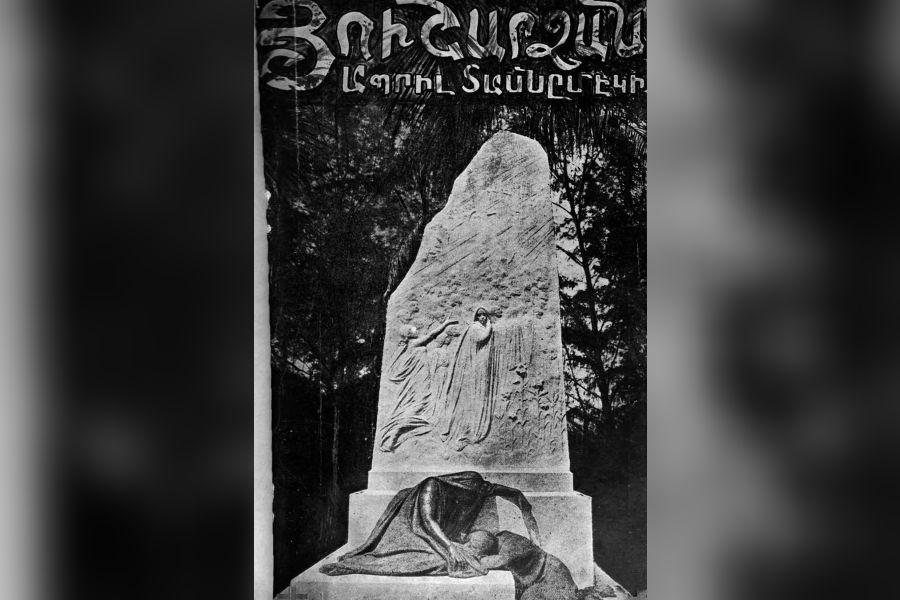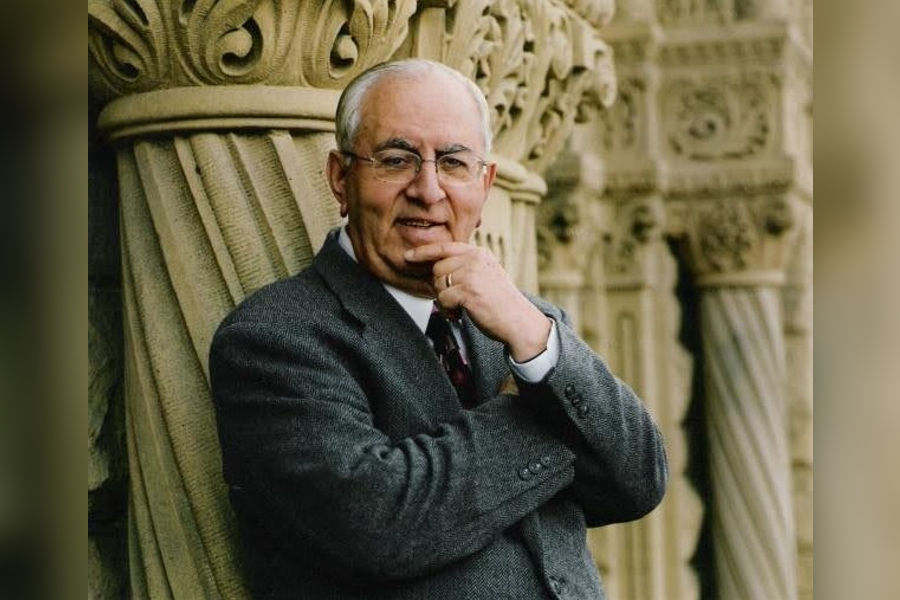
Sacred Justice: The Voices and Legacy of the Armenian Operation Nemesis
By Marian Mesrobian MacCurdy
Transaction Publishers, New Jersey (Feb. 28, 2015); 407 pages
ISBN 978-1-4128-5503-7; Hardcover, $59.95
2015 marks the Centennial of the Armenian Genocide and the world is commemorating and paying tribute in many ways. This year has already seen the publication of several books and volumes that deal with various aspects of the genocide. From the publication of memoirs and first-hand accounts to anthologies of poetry and fiction, the 100th anniversary has given writers the opportunity to shed light on the century-old crime.

Marian Mesrobian MacCurdy’s Sacred Justice: The Voices and Legacy of the Armenian Operation Nemesis uses many literary styles to tell the story of one of the most interesting aspects of modern Armenian history. Published by Transaction Publishers in February, Sacred Justice crosses several genres and fully engages the reader. By using captivating narratives, selections from memoirs, insightful previously unpublished letters, and several other primary and secondary sources, Mesrobian MacCurdy gives a behind the scenes look at what was then referred to as the Hadug Kordz (Special Project or Mission).
Mesrobian MacCurdy explains that after the death of her grandfather, Aaron Sachaklian, her family discovered that he was one of the key leaders of Operation Nemesis, the covert plot to assassinate the key orchestrators of the Armenian Genocide. Sachaklian, the finance officer and logistician of the operation, was responsible for figuring out how to fund and organize the effort—something that was unknown to his family until his daughter found a large collection of letters and records in his study in 1990.
In her introduction, Mesrobian MacCurdy notes that the overarching themes in Sacred Justice are victimhood and resistance—themes that she is able to accurately describe through both historical and personal narratives.
The book’s first two chapters focus on the author’s grandparents: Aaron Sachaklian and his wife, Eliza Melkonian Sachaklian. The reader is given an in-depth look into the two as individuals, and later as a couple, through several letters they wrote to one another as well as to other family members, friends, and colleagues. Getting to know Aaron and Eliza is vital to understanding the rest of the story. Mesrobian MacCurdy is able to brilliantly use personal narrative and memoir to provide important information about their upbringing, their personalities, and their marriage. The idea of victimhood is highlighted as she offers the reader selections from Eliza’s memoirs, which offer first-hand accounts of the Hamidian Massacres (1894-96). Through this narrative, Mesrobian MacCurdy is also able to portray both Aaron and Eliza as resistors, ready to defy the odds and survive through adversity.
The story of the actual operation is highlighted in the third chapter, which provides never before seen details of the operational and methodological aspects of Operation Nemesis. Through several letters between Sachaklian and other central figures of the Armenian Revolutionary Federation (ARF), such as Armen Garo and Shahan Natalie, the reader is able to see the emotional and personal side of the operation. Mesrobian MacCurdy also provides important historical context to the letters, which were translated from Armenian for the book.
In addition, she includes “the One Hundred List,” the list of 100 of the first-level organizers and perpetrators of the Armenian Genocide, which was discovered in Sachaklian’s files, as well as other pertinent documents that were revealed, including a packet of 65 photographs of Turkish officials. These are all vital to the successful telling of the story, as they indicate the diligence and thoroughness of those in charge of Nemesis.
Since Sachaklian was the logistics and finance officer of the project, some of the financial records of the operation were also discovered by the family. Mesrobian MacCurdy’s inclusion of these records is important, as readers are given a rare look at the fiscal planning that was involved in such a covert operation. The detailed financial records of Soghomon Tehlirian’s trial are perhaps most interesting, since they reveal all the expenses of his defense in near-complete detail.
One of the most thought-provoking aspects of Sacred Justice is Mesrobian MacCurdy’s description of the legacy of Operation Nemesis. The themes of victimhood and resistance are highlighted through the depiction of how differently her maternal and paternal families dealt with the same historical injustice. By drawing on the work of psychologists and specialists in trauma, Mesrobian MacCurdy tries to uncover the different ways her family chose to deal with the pain associated with the genocide.
While there have been many books written about the history of the Armenian Genocide, very little has been written about Operation Nemesis. Nearly a century after the project was carried out, the subject is still very much taboo in the Armenian community—a point that MacCurdy makes early on in her book. While there have been some books written on the subject, many have focused on certain figures or aspects of the story while ignoring others.
Mesrobian MacCurdy has done an admirable job in bringing together different genres to tell an important story—one she is personally connected to. This, coupled with her engaging writing and beautiful use of language, is vital to the success of the book.
Sacred Justice is the result of meticulous, years-long research and study. Not only has Mesrobian MacCurdy been able to offer a comprehensive historical account of an important aspect of modern Armenian history, but through the personal narratives of her grandparents and those directly involved with Operation Nemesis, she has given readers a look into the details, which were previously unavailable.
In a letter sent to his colleagues in the United States in 1921, Shahan Natalie described the assassination of the chief mastermind of the Armenian Genocide, Talaat Pasha, as a “sacred work of justice.” Nearly 100 years later, Mesrobian MacCurdy’s book proves to be another significant work in the quest for justice for the 1.5 million victims that were killed a century ago.










Can’t wait to read this book. Hope to have the author at a book fair here in Michigan!
A book that certainly is worth reading, especially that it reveals about an Armenian patriot Aaron Sachaklian , who was one of the key figures in the ARF that plotted Operation Nemesis and assassinated the masterminds of the Genocide.
Another book that is a must-read is Eric Bogosian’s “Operation Nemesis” which can be ordered on Amazon.com.
Nemesis in Greek mythology was the goddess of retribution or vengeance. And Vengeance it was at a time following World War I, when the big powers were playing their games and no one was talking about the Genocide that had occurred but the world had forgotten.
For those AW readers who are interested, the French-German ARTE TV Channel has produced a documentary on Operation Nemesis, entitled also “Tehlirian’s Trail”. It is an extremely well documented production as it puts Talaat and the Turkish government on trial.
You can access at http://info.arte.tv/fr/la-vengeance-des-armeniens-le-proces-tehlirian.
It is in French, and the video is available on the web site until May 5. The actual broadcast on European TV channels is planned for April 28.
Vart Adjemian